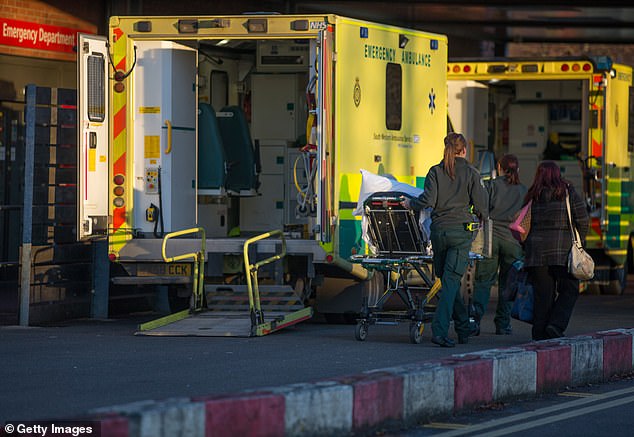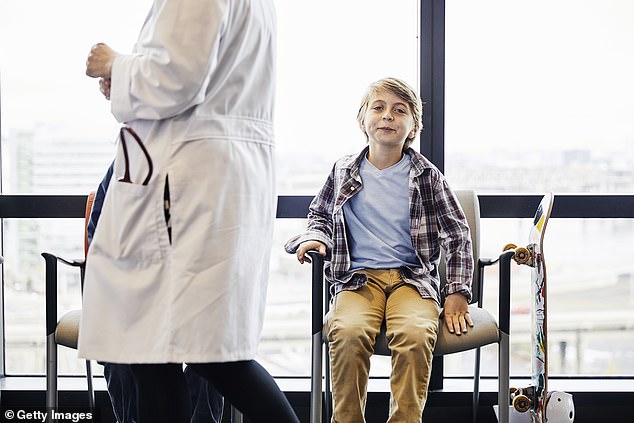Seriously injured children face longer waits in A&E if they are taken by their parents rather than in an ambulance, research shows.
The study at Bristol Royal Hospital for Children found that those taken to hospital by their carers typically waited an hour to be seen by emergency doctors, rather than immediately if given the blue light.
Among them were children with broken bones and skull fractures.
The researchers observed children under 16 years of age brought to the emergency department between August 2020 and May 2022 by their caregivers, without using emergency services.
During this time, 153 children with severe trauma were treated.
Girl with mother at surgery examination. The study found that those taken to the hospital by caregivers typically waited an hour to be seen by emergency doctors rather than immediately if they were given the blue light there.

A patient is transferred from an ambulance parked outside the Accident and Emergency department at Gloucestershire Royal Hospital on January 6, 2015 in Gloucester, England.

A little boy sits in a hospital waiting room. The wait time to be seen by children under 16 years of age brought to the emergency department ranged from three to 168 minutes, according to findings presented today at the European Congress of Emergency Medicine in Denmark.
Of those, 24 had injuries significant enough to be added to the national Trauma Audit and Research Network (TARN), but none received care from the core trauma team.
The average age of the children was just over six years.
Waiting times to be seen ranged from three to 168 minutes, according to findings presented today at the European Congress of Emergency Medicine in Denmark.
Dr Robert Hirst, emergency medicine registrar at the hospital who led the study, said: “We see many injured children brought to the pediatric emergency department each year.
«The majority are transported by ambulance, which requires pre-hospital emergency services to previously alert the emergency service of their arrival.
‘This leads to early activation of the trauma team, resulting in specialist services and resources being ready and prepared to care for these patients as soon as they arrive.
‘However, we know that there are a group of children who are brought in by their carers and do not receive this rapid activation of resources.
“This can lead to delays in providing the appropriate level of care.”


